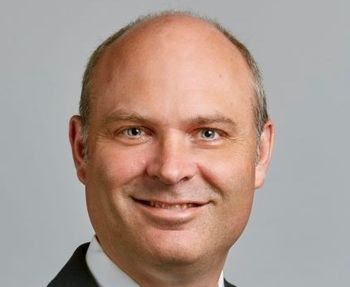
PX: Innovation Vs. Implementation: Which Startups Are Doing it Right in Healthcare?
Disruption is a difficult game, especially for healthcare startups, whose innovative ideas are a dime a dozen, but whose implementation strategies are often murky at best.
The disruption scene in healthcare is full of bright, driven startups with innovative ideas. But innovation is less than half of the battle. There’s another “I” word that’s much more difficult to achieve, especially in an entrenched, slow-moving healthcare system — implementation.
Another hurdle? Before they can reach initial public offerings, smaller, nimbler companies are often bought out by bigger, relatively sluggish ones.
And yet, despite these challenges, startups continue to launch every day. Here are a few worth keeping an eye on.
Innovation Vs. Implementation: Which Startups Are Doing It Right in Healthcare
A Healthcare Analytics News® Peer Exchange®
Segment 7/13
Kevin R. Campbell, M.D.: We have been talking about the big companies. We’ve been talking about Apple and Google and Amazon and Walmart and all the big EMR companies. Legacy companies are not the only ones that are trying to enter this market. I’m CEO of a medical start-up company. It’s been one of the most challenging and rewarding things I’ve ever done, and it’s always something new every day. What role do you think start-ups are playing in this disruption of health care? Do they have a role? Is it significant? How might it impact it? I’ll toss that to you.
Jane Sarasohn-Kahn, M.A., MHSA: That’s the lifeblood of innovation right there. They’re small, they’re nimble, they’re smart, and many of these companies are founded by people who have had a medical problem or a kid with a problem. They figured out how to hack it, and they figured out how to scale it.
You talked about Athena Health earlier, and it’s interesting because they first disrupted by doing something really boring in the back of doctors’ offices. They worked with fax machines and paper and took that out of the workflow of the physician, and they’ve grown and grown and grown. Now they’ll probably get sold to somebody bigger.
Kevin R. Campbell, M.D.: A multimillion-dollar company.
Geeta Nayyar, M.D., MBA: And then that multibillionaire company will mess it up, right? Look at IBM. Look at Watson.
Jane Sarasohn-Kahn, M.A., MHSA: We hope not.
Geeta Nayyar, M.D., MBA: They gobbled up a bunch of start-ups that were doing great in their own right. A non—health care company tries to get into health care, big bureaucracy meets small start-up innovation, and they get halted, right?
Jane Sarasohn-Kahn, M.A., MHSA: We hope that doesn’t happen, because there are these gems, these pearls, that we want to see flourish.
John Nosta, B.A.: There are two points, I think, that are interesting here. Number 1, how many IPOs (initial public offerings) were there last year in the health tech space? Zero. There were zero. The nature of innovation is such that it’s an acquisition model. Number 1, big pharma is looking to buy those companies. That’s the one insight. Those little companies that started in a garage are the lightning bolt. I go back to the proverbial three-legged stool: It’s lightning, clinical validation, and market access. It’s those three things.
The other thing that’s real interesting to me is that every innovator isn’t Elon Musk. Every innovator isn’t some big, bold guy yelling at the top of his or her lungs. Especially in health care, innovation can be fragile. We have to coddle innovation in a way. We recognize that poor mom with a kid with cystic fibrosis might have a brilliant idea, but she doesn’t yell as loud as Elon Musk. To me, those are really interesting dynamics that play into this very complex market.
Geeta Nayyar, M.D., MBA: You're spot on, and we also have to have an appetite for failure, right? Why are providers not part of the conversation? Why are hospital systems not part of the conversation? They are in pockets of the country. There are, first of all, very small margins to play with; and secondly, there is this appetite for failure. We’ve got to say that we expect you to innovate. You’re not going to get it right the first time. Very few do. There has to be an appetite for failure, and there has to be a budget for failure so that, hopefully, there’s that one light bulb that goes off.
John Nosta, B.A.: Everyone talks about the proverbial exponential curve. We’ve seen that exponential curve, and when you plot it against a traditional pharmaceutical linear of 5 percent or 10 percent growth, there’s an area early on that dips below traditional growth. That’s where every manager and every CEO gets nervous.
Geeta Nayyar, M.D., MBA: Correct.
John Nosta, B.A.: Number 1, you have to plan to fail. Number 2, you have to realize that even early innovations that work are below that line, and that’s an important construct.
Colin Hung, BaSC: I think that’s what large companies are doing with that acquisition model you mentioned, John. These little start-ups can afford to operate on a smaller scale, and they can be a lot nimbler, and they can fail, and then these bigger organizations can come in and either help them or acquire them when they’ve proven the model. They’ve worked out all the kinks, they’ve pivoted four or five times and found the right formula. For me, that’s what’s exciting about some of this new crop of innovators that is coming out.
They’re not the lightning bolts, I would say. However, they’re taking models that have worked in other industries and are applying them to health care. One company that I know is CareCognitics. They’re taking this loyalty program that a casino uses and applying it to health care to motivate behaviors, to really provide that concierge feeling that a VIP would feel at a casino. Now I look at that and think, “Well, that’s not that innovative.” The guys who win also lose all the time, but they’re applying it in health care, and they’re respecting the rules of health care around HIPAA, physicians and those kinds of things.
John Nosta, B.A.: Colin, we have to replace the I with a different I. Innovation is probably better served in many instances by implementation. Take a look at telemedicine. Telemedicine works, we have the methodology. We just have to implement it well, and I think a lot of innovation is really that kind of dynamic.
Kevin R. Campbell, M.D.: I think most start-ups lack that. They have all the innovators, they have all the smart people, they have all the passion, but they have to have that implementer on the team. You’ll see it with the Medtronics of the world. Medtronic is Big Blue in the CRM (cardiac rhythm management) space. They make all the heart valves. They’re the market leader, and do they continue to improve their products? Yes. Are they innovating on the outskirts? Probably not as much, because they’re looking at what Covidien is doing or what this person is doing or what this person is doing. Rather than spend hundreds of millions of dollars, we’ll just suck them into our vortex and improve upon it or not. That’s good and bad, like you mentioned. It’s good in that those technologies finally have a voice. It’s bad in that sometimes those technologies can get lost in a really deep pool and never come to fruition.
Colin Hung, BaSC: I think it’s a big cycle. We’ve seen it happen, where a company will acquire this really hot start-up with really great technology and blow it. It doesn’t get implemented. It loses momentum. And guess what happens? That gets spun out. Those founders go out and start another one, and they start it again. You know what? I don’t see it as a bad thing. I think it’s 50-50 in my mind, and it actually may work. Some company will acquire it, and they’ll actually pour in the right access, the right dollars and the right people to make it sustain success.
Get the best insights in healthcare analytics
Related
















































